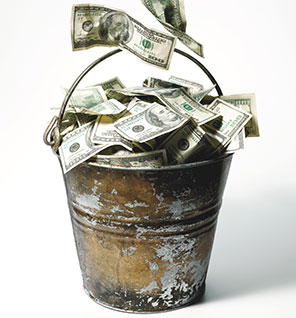There's been a lot of chatter on the blogs this week related to the Brewers Association stats for 2012. The numbers present a pretty little picture for craft beer, exactly the way the Brewers Association and craft beer fans like it.
When it comes to statistics and damn lies, people tend to get fixated on the wildest numbers out there. That would be the total number of operating breweries, which reached 2403 in 2012, including 409 opening and 43 closings. As some have pointed out, the number is largely meaningless. Brewery numbers are increasing because craft beer is a good business to be in. When will we reach the point where there are too many breweries? No one knows and few are openly talking about it. Nothing new there.
The most significant numbers have to do with production and dollar volume. For the first time in recent years, overall beer production increased in 2012...by 1 percent. Craft brewery production grew to 13.2 million barrels (up from 11.5 million) and craft share of overall volume grew to 6.5 percent, up from 5.7 percent in 2011. Not bad.
Of course, it's all about money. Craft beer's share of the retail market grew to $10.2 billion, a 17 percent increase over 2011. The total value of the retail beer market was $99 billion. While money may not be everything, it's arguably the most important stat here. Why? Keep reading.
There are two gigantic factors driving the growth of craft in the retail market.
First, the market penetration of more expensive craft beer is driving its dollar share upward. There's more. Craft brewers are releasing a growing number of premium products...bottles that sell for $10-20 or more. Don't believe me? Check out your local bottle shop or premium grocery store. The number of high end beer products has increased dramatically over the last few years and is a marvel to behold. Sales of high value products help increase retail market share.
Second, and just as important, the macro brands are engaged in significant discounting to stay in the game. I suspect this isn't happening in all regions of the country, but it is certainly happening in areas (like Portland) where craft beer has a large following and growing reach. Craft beer prices are stable and edging up. Macro shelves are increasingly lined with discount tags. The big boys are losing retail share because they cannot compete with better beer without discounting.
Just to close that loop, the discounting strategy is a bad omen for the macros. The number of people who will consider their products at any price is moving in the wrong direction. Better education and greater exposure to good beer suggests the macros will have an increasingly tough time attracting customers, even with discounting.



No comments:
Post a Comment
Keep it civil, please.